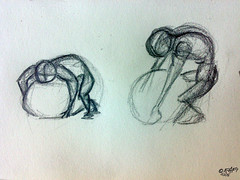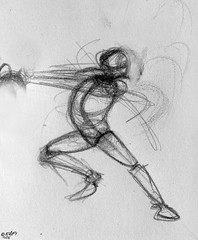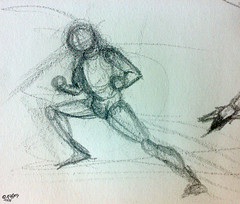
Thumbnails are incredibly quick to draw, each one usually takes about 30seconds to a minute at the most.

So, it's a really effective and efficient way to work out the key storytelling poses required for my shot. By keeping things simple, yet clear, I get to explore multiple ways of staging a scene or playing an action.

Of course, drawing quickly is an invaluable skill when it comes to planning sequential art. So I only draw what's abosulutely neccesarry - glorified stick figures at best.
At the end of the process, not only am I clear with what needs to be drawn or (in the case of CG animation) manipulated for the final scene to work, I'm also really well-prepared with handy sketches like these to refer to.
Poses will most likely be refined and pushed further in the animation process, but these thumbnails make a great guide, forming a detailed visual description of the essential components required to tell my story. Best of all, I can work these out in next to no time at all.

Working out the strongest pose takes forever on the computer (for me at least). But drawing with the humble pencil on paper is much more intuitive for me. I somehow find it a more direct route to "feeling" the action of the pose.

In fact, lately I find I'm much less intimidated than I used to be by a fresh, blank sheet of paper. The process of sketching and searching for the right pose or series of poses for an action is more like exposing what's already there in the paper. You sort of skulpt with your pencil as you feel your way from the line of action through to the orientation of hips, shoulders and the subsequent twist in the torso. By then, the placement of feet and arms seems to happen naturally.
I'll write more about that in a future post.

No comments:
Post a Comment